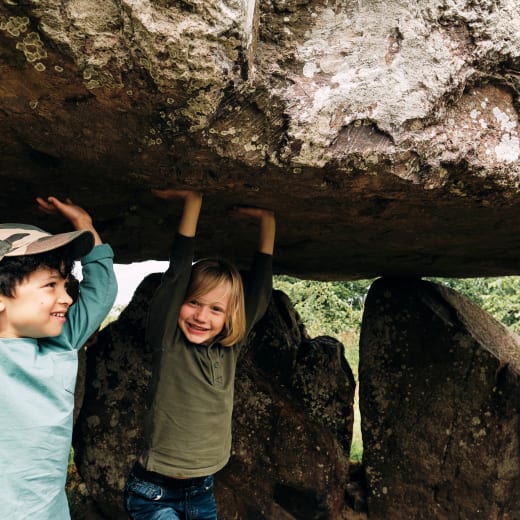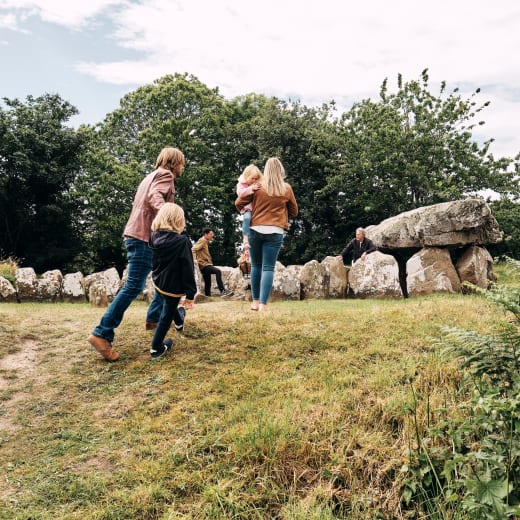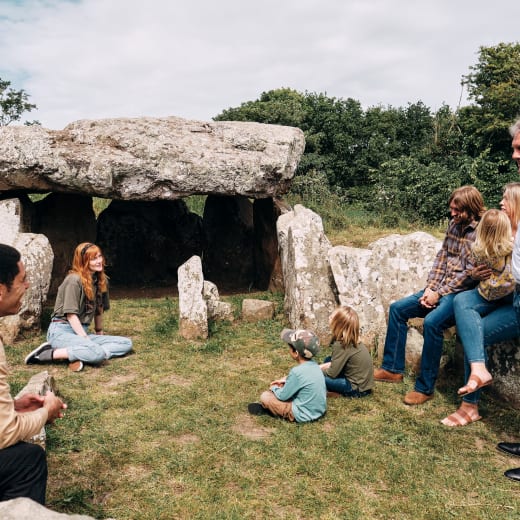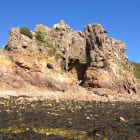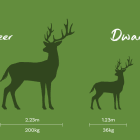
A free-to-access dolmen built around 6,000 years ago
Opening times
Open 24 hours a day 7 days a week.
Pricing
Free of charge.
Location
- Address Rue des Marettes, St Martin, JE36DS
- Directions The dolmen is in a field near the junction of Le Mont Mallet and La Rue des Marettes
- Parking There is no parking at the site, some off-street parking is available close by
- Parking in Jersey For guidance read this
- Bus route 1,1a,2 and 13
- What3words location finder fond.smirking.mythic
Facilities
- Dogs Are allowed on site
In Jersey you’ll find some of the best-preserved prehistoric sites, dolmens and passage graves in the world, with ancient dolmens dotted around Jersey.
In the clearing you’ll find the dolmen built around 6,000 years ago to align with the rising sun on the spring and autumn equinox. This is only one of two dolmen built this way, the other being La Hougue Bie.
Originally, the whole site was covered by a low mound with two drystone walls and a ring of upright stones. The main chamber is open and surrounded by a series of side chambers. The second chamber to the right-hand side as you approach is covered by a massive 24-ton capstone. Human remains were found in the side chambers as well as pottery vessels, two polished stone axes and two stone pendants.
Apart from the heavy rhyolite capstone, all of the granite stones and the one diorite stone used were transported uphill from within two and a half kilometres of the site.
Surrounding the site are fields used today by local farmers to grow vegetable and Jersey Royal potatoes.
Most stones are made of granite , while the massive capstone is made of rhyolite and one stone is diorite. All of these stones would have been transported uphill to create the dolmen.
This site is managed by the Société Jersiaise.
Places to Visit
Signal Station
The Island’s only working signal station, displaying weather warnings and signals for special occasions.
Places to Visit
La Hougue Bie
A peaceful and ancient site where you can visit one of the oldest buildings in the world.
History
La Cotte
At La Cotte de St Brelade (La Cotte) in Jersey, appearances are deceptive but there is more to it than meets the eye.
History
Dwarf Red Deer
Jersey Heritage has some rather unusual red deer bones on display at Jersey Museum.











